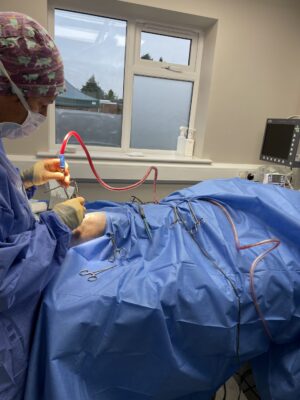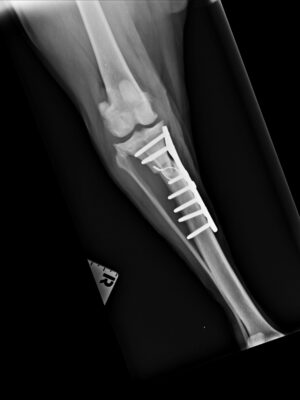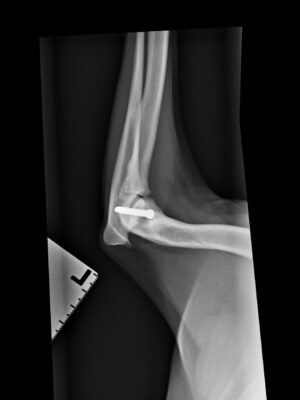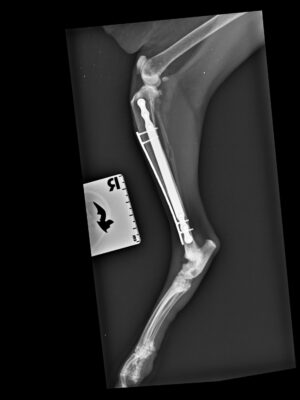Orthopaedic Surgery
We are able offer a range of orthopaedic surgeries performed by a visiting surgeon from ProVetSurg. This enables advanced surgeries to be performed here at Mulberry House so there is no need to travel to a referral centre and your pet can be looked after in familiar surroundings by a team of vets and nurses who know them.
Cruciate ligament disease or injury
The cruciate ligament is a small band of tissue that attaches the thigh bone (femur) to the shin bone (tibia) to help hold the knee joint stable. In dogs with cruciate injury, this ligament is damaged which creates excessive and painful movement of the knee joint. Dogs may have a mild intermittent lameness from gradual weakening of the ligament or a sudden severe lameness after an injury which causes complete rupture.
For both short-term pain management and long-term prevention of arthritis, surgical repair is recommended. The operation involves changing the angles of the joint so that it is stable when weight bearing. This is done by making cuts in the bone to reposition the angle and hold it in place with implants.
Dogs are usually starting to weight bear comfortably within 2-3 days after surgery, but bone healing usually takes 6-8 weeks. 90% of dogs will return back to normal activity levels by 10-12 weeks after the operation.
Our Cruciate Ligament Disease page has more detailed information on this condition.
We offer a fixed price fee for cruciate ligament repair surgery which includes all post operative checks, medications and 6 weeks post op xrays. Please see Our Prices page for these costs.
Patella luxation (dislocating kneecap)
When the stifle joint (knee) bends, the patella (kneecap) slides smoothly up and down a groove at the bottom of the thighbone.
Patella luxation is when the kneecap slips out of the groove. This stops the knee from bending which can result in a skip or bunny hopping action. Over time as the kneecap repeatedly rubs abnormally past the bone it can cause pain and arthritis.
Patella luxation is most common in small breed dogs. It can affect one or both knees, and ranges in severity from mild with only occasional bunny hopping shown to severe when the kneecap is permanently dislocated resulting in the knee joint being unstable and painful.
After careful examination and taking xrays, our vets will advise if surgery is needed. The operation involves realigning the kneecap and sometimes deepening the groove which the kneecap slides up and down to help keep it in place.
Arthroscopy
Arthroscopy is a type of keyhole surgery used to examine and treat joint disease, most commonly elbows.
A tiny rigid camera is inserted into the joint to look inside. If surgery is needed, a second small incision is made for the surgical instrument to be used.
Performing detailed examination and surgery in this way keeps pain and tissue damage to a minimum.
Fracture Fixation
We see many different types of broken bones in our pets resulting from exuberant play, falling from heights and road traffic accidents.
Fortunately, following surgery most pets will make a full recovery to normal exercise. If your pet has a sudden lameness or swelling in their leg, our vets will recommend immediate pain relief and xrays to assess whether there are any broken bones. We will then send these xrays to the surgeons at ProVetSurg who will be on hand to make a plan for urgent surgery to repair the fracture.




